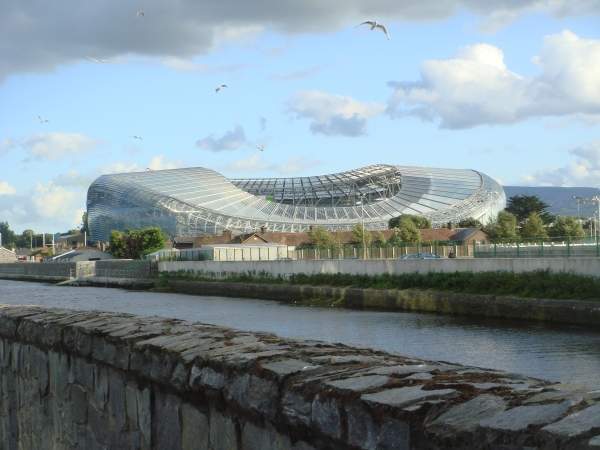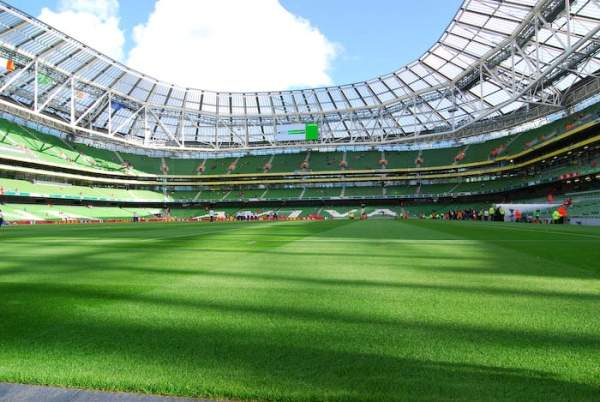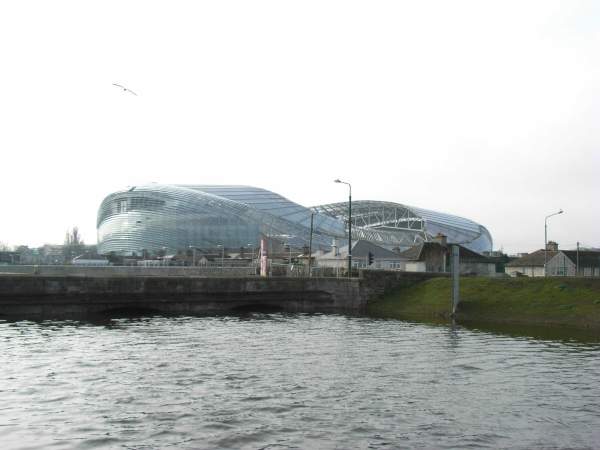Aviva Stadium is a new stadium built in south Dublin, Ireland, in 2010 at a cost of €410m. It is owned by the Football Association of Ireland, the Irish Rugby Football Union and the Irish Government.
Previously known as Lansdowne Road Stadium, it is built on the historic site, surrounded by residences, on Lansdowne Road in Dublin’s suburbs. It replaced the world’s oldest international rugby stadium, built in 1872.
Demolition of the old stadium was started in June 2007. Construction was started in April 2007 and completed in April 2010. The stadium was officially inaugurated in May 2010.
The stadium has 66,460m2 of area and can accommodate 50,000 spectators. It has been certified as a BS8901 venue.
It will host international football, rugby, concerts and events. It has improved facilities over the former stadium and provides tenant clubs, new conference and dining facilities and local community facilities.
Aviva Stadium stands among the top sustainable and site-responsive stadiums in the world. It received the Emirates Glass LEAF Award in 2011.
It has won several awards including the British Construction Industry Awards’ Best International project in October 2011.
Design of the new Aviva Stadium
Populous in collaboration with Scott Tallon Walker Architects won the contract to design the project in 2005.
The redevelopment posed many challenges such as the restricted site, the Dublin-Wexford railway line passing through the stadium, an established residential community and Dodder river in the east. The materials, form and mass of the stadium were determined based on the site location and surroundings.
The field dimensions of the stadium are 106m× 68m (348ft × 223ft) and the roof measures 19,000m2 in area. The sloping roof in the north and south and transparent façade avoid blockage of sunlight on the adjacent residences and the Lansdowne Road.
Seating at all levels can be reached through multiple concourses and double height entrance lounges. The seating area is designed to provide optimal view of the pitch.
Construction of the international rubgy stadium
The project involved construction of a new access podium over the railway line, minor realignments, a new shop, Wanderers’ Football Club and administrative offices, refurbishment of Lansdowne Football and improvement of public access.
The crushed concrete was reused and the wastes were recycled during construction. Noise at the construction site was controlled using dB meters.
Façade materials
The façade of the stadium is clad in polycarbonate louvres and glass. The façade provides a shimmering effect to the stadium by reflecting the variations in sky and light conditions. The transparent shingles give a modern international arena and new identity to Ireland.
Structure of Ireland’s Aviva Stadium
The Aviva Stadium has a unique structural design with only two columns. The two columns are designed to transfer the entire forces coming from the truss, minimising the impact on environment and allowing a stable structure.
The unique free flowing bowl shape of Aviva was concluded after studying different geometries.
The single tier on the north grows to four tiers in different heights along the south, east and west sides. The truss is horseshoe-shaped along the south, east and west tiers. Conventional tapering concrete super-columns support the northern tier.
The structure is also supported by spur-trusses and a ring truss which runs along the perimeter. The primary trusses and ring trusses are spanned by cantilevering tertiary trusses.
The cantilevered steel roof weighs about 150kg for a square meter. It reaches 47.65m above the pitch area, rises 203m east to west and dips to 189.9m north to south.
Interior design features
The stadium has more than six levels of seating area. Multiple entrances are located at the ground level. A public concourse is located beneath the north seating tier.
The first and fifth levels are general admission concourses and are open to external environment. The second, third and fourth levels are enclosed and serve as premium facilities.
The south stand consists of 36 corporate boxes accommodation and a 650-seat restaurant. Admission areas feature burnt orange resin floors, exposed concrete, fair faced blockwork and cores of grey texture. The interiors feature whisper quiet chilling fan technology and acoustics panelling for minimal background noise.
Sustainability of the stadium
The Aviva Stadium is designed in harmony to the local environment and community of its surroundings. The transparency of the façade gives maximum sunlight to the interiors and the pitch while absorbing UV radiations.
Top soil of the old pitch was stored during construction and reused on the new pitch. The exposed pre-cast and in-site structures used low carbon concrete. Timber was procured from sustainable resources. Plastic used for the façade is fully recyclable.
The rain water is stored in 250,000l tanks and used for pitch irrigation. Energy efficient building management systems, low energy light fittings, Integrated Building Analysis Software Systems and heat recovery generators save substantial amounts of energy. Sensor taps and environment friendly wash room fixtures save about 20,000l of water a day during events.
Contractors involved in the new stadium project
The structural and civil engineer for the project was Buro Happold. Project Management provided the construction supervision services.
John Sisk & Son was the main contractor. Keogh McConnell Spence / Franklin Sports were the quantity surveyors. ME Engineers was the services engineer and Gross Max the landscape consultant.
Michael Slattery Associates, Tom Phillips & Associates and The Sports Turf Research Institute were the fire, planning and pitch consultants respectively.







